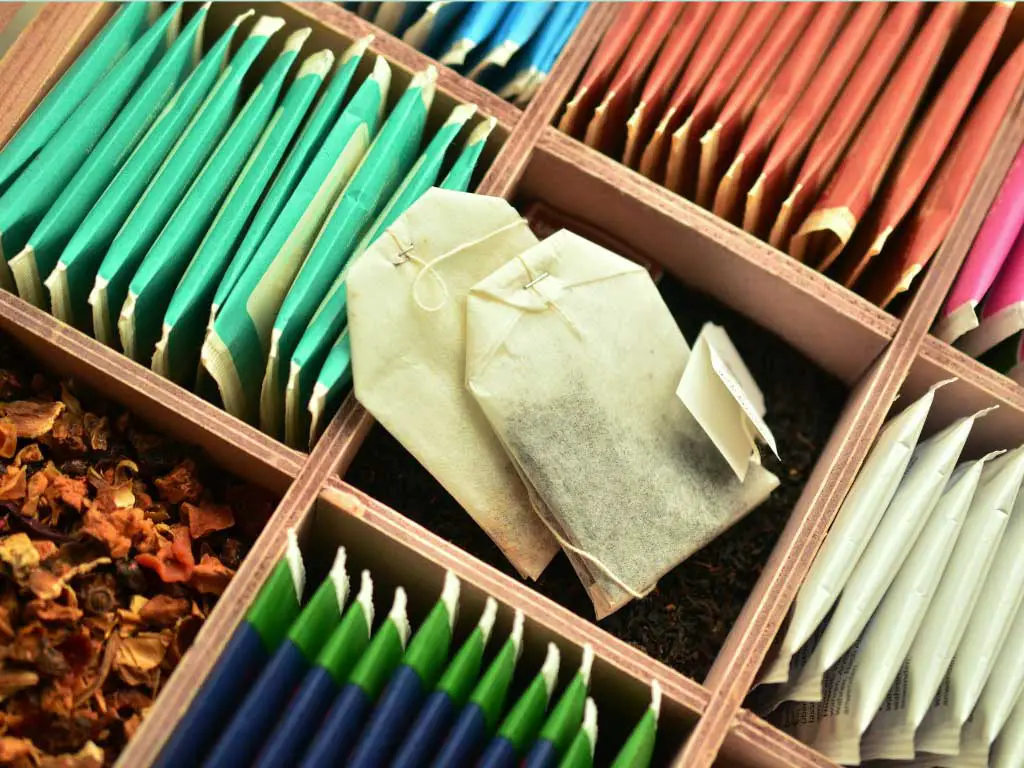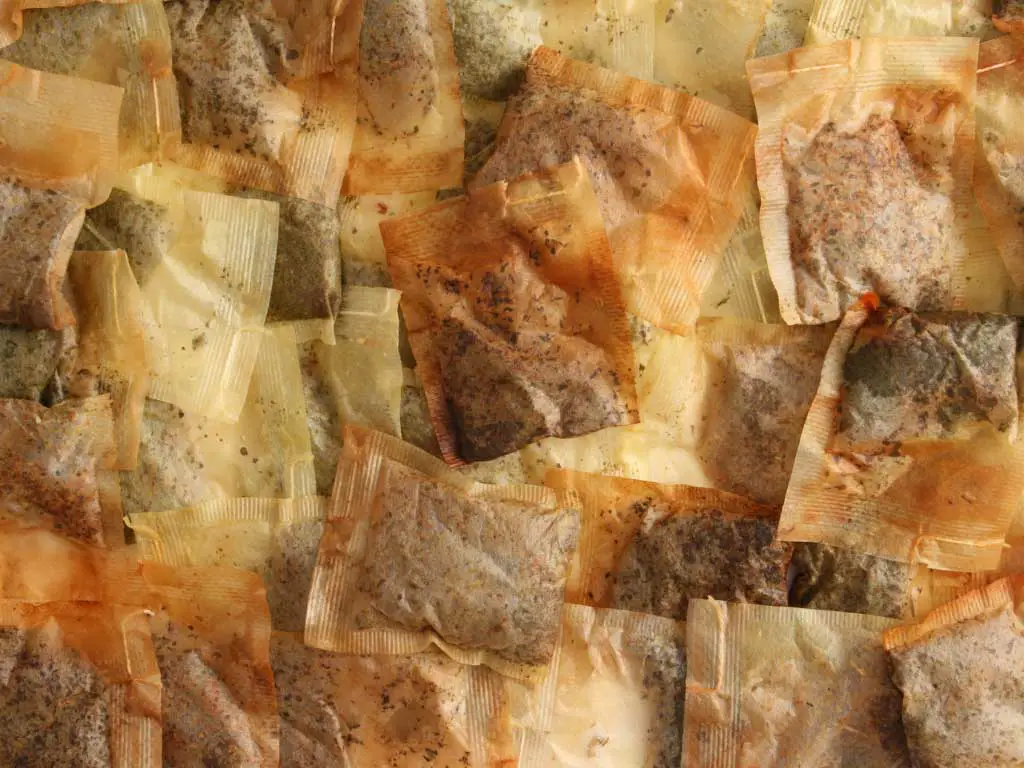If you’re a tea lover, no doubt having at least a cup of tea a day is an integral part of your daily routine. And, you definitely don’t go to a café or a tea bar every day to get just a cup of tea.
Most tea lovers like me love to make their own tea at home. If you’re one of us, you probably have a packet full of tea bags always available in your kitchen.
Most of us throw The tea bag away, along with the tea leaves, as it turns into a waste material after use. And many of us choose to put it down the garbage disposal.
Many people believe anything can be thrown into garbage disposal, but this is not true. Certain items can damage the garbage disposal or clog the drain, leading to costly repairs. One such item that often raises questions is the tea bag.
Is putting tea bags down the garbage disposal a good idea? That’s what I’ll be discussing throughout this whole article. Have a look! I will explain why it’s not recommended to put tea bags in the garbage disposal and provide alternatives for disposing of used tea bags.
Quick Answer
No. You might put tea bags in the garbage disposal, but it’s risky for your disposal blades. The disposal blades may get tangled with the strings of the tea bags, and fibrous tea bag material helps to create clogs in the drain.
Can You Put Tea Bags in a Garbage Disposal?
No. You cannot put tea bags into the garbage disposal. Contrary to what some might think, putting tea bags in the garbage disposal is not recommended.

Every tea bag is attached to the string, and a paper tag is at the other end.
Simply this string can be tangled with the blades and make the garbage disposal jam. Also, the tags won’t get chopped off but will get stuck to the blades of the garbage disposal or the walls of the pipes. You should never put the tea bags into the garbage disposal along with these tags.
And it might further stick other discarded food items with it. Or, it might even lessen the ability of the blades to shred the disposed foods properly.
What Happens When You Put Tea Bags in a Garbage Disposal?
When tea bags are put in a garbage disposal, several problems can arise.
First, the main reason is that string and tags attached to many tea bags can wrap around the garbage disposal’s blades and get tangled with the tea bags, causing them to malfunction or become less effective.
Even though the string or thread attached to the tea bags is not too strong and can’t be torn apart, they aren’t fragile enough to be cut down by the garbage disposal blades.
Second, the tea leaves themselves, when wet, can expand and clump together. When this happens inside the disposal, it can lead to blockages in the garbage disposal and the pipes downstream.
Over time, these blockages can build up, leading to serious plumbing issues that require professional attention.
Do Tea Leaves (Tea Bags) Block Drains?
Plain loose tea leaves have the potential to clog the drains gradually. But when it comes to the tea leaves within the tea bags, they are too short to form a blockage in the drain.
But if you use a lot of tea bags at a time and decide to throw them down the sink, you might regret it.
Because even though the tea inside the tea bag is very short in size, that doesn’t change the fact of it being leafy and fibrous to form a clog.
Tea bags dumped in larger amounts down the sink have a good chance of forming a clog in the drain due to too much fibrous element.
Moreover, the thin tea bag material that holds the tea leaf inside it together is also made of fibrous components. And so they also contribute to clog formation in the drains.
Besides that, it must be mentioned that most of the thin and semi-transparent tea bags made by famous and well-appreciated tea companies are manufactured with a very thin sheet of plastic known as polypropylene.
And when you put them down the drain or garbage disposal, you know where the drain will ultimately take them, right?
These shredded plastic residues of tea bags that are undegradable end up in the ocean, which further harms many aquatic creatures and causes massive water pollution.
That’s why if you have tea bags from some of the most well-known and relatively expensive tea companies such as Tetley, Twinings, Typhoo, etc., you should avoid throwing them down the garbage disposal or drain to reduce environmental pollution from your side.
How Do You Dispose of Wet Tea Bags?
By now, it should be clear that disposing of the wet tea bags in the garbage disposal is not the best way to dispose of them.
So, let’s find the best solution for disposing of wet tea bags.
Put Only Tea leaves into Garbage Disposal
If you want, you can still dispose of only the tea leaves inside the tea bags in the garbage disposal after separating them from the thin plastic tea bag.
But you need to ensure that you don’t throw away more than one tea bag of tea leaves to the garbage disposal at a time, as it might lead to clogs.
Composting
If you’re thinking about whether you can put them in your compost bin along with other food items, then there’s something you need to consider.
Tea leaves are organic matter and are excellent for composting. They can add valuable nutrients to your compost pile and, ultimately, your garden. Simply remove the tea leaves from the bag and add them to your compost. If the tea bag is made of natural materials like cotton or hemp, it can also be composted.
In that case, the plant fibers of the thin tea bag will also be utilized in composting along with the tea leaves.
Yes. You guessed it right! Mostly it’s an undegradable thin plastic bag. Most tea bags contain small amounts of plastic additives in their wrap to prevent tearing when put in boiling water.

If you put the whole tea bag and the plastic covering in the compost bin, you’ll still notice traces of the plastic skeleton after all the food particles decompose. You can remove the plastic skeleton from the compost after the tea decomposes, along with the other food particles.
There are two things you can do in this regard.
- One is that you can remove the plastic skeleton from the compost after the tea decomposes, along with the other food particles.
- The other thing you can do to simplify the issue is to put only the tea leaves of the tea bags in the compost bin by splitting the thin tea bag. Then, throw the thin plastic wrap into the general waste food bin in the house, which will be taken away by the weekly garbage collecting vans in your area.
In this way, you are preventing your compost from getting contaminated by the harmful components of the plastic.
Regular Trash
If composting is not an option, used tea bags can simply be thrown in the regular trash. While this doesn’t offer the environmental benefits of composting, it’s a better option than risking damage to your garbage disposal.
What Else Shouldn’t You Put in Garbage Disposal?
Tea bags are not the only items that should be avoided in garbage disposal. Other items include:
Fats, Oil, and Grease
These substances can solidify and cause clogs in the plumbing system.
Find out more details about disposing of grease from the article “Can You Pour Grease Down The Drain?”
Starchy Foods
Foods like rice, pasta, and potatoes can become a paste that can clog the drain and gum up the disposal.
Fibrous Vegetables and Peels
Items like celery, corn husks, and potato peels can tangle around the disposal’s blades and cause clogs.
Eggshells, Shellfish, and Coffee Grounds
These items don’t decompose quickly and can accumulate in the pipes, leading to blockages.
Read the article and be more informed about putting coffee grounds and eggshells in the garbage disposal.
How to Maintain Your Garbage Disposal
Proper maintenance of your garbage disposal can prevent clogs and damage. Here are some tips:
Run Cold Water
Always run cold water while the garbage disposal is in use and for a few seconds after you turn it off. This helps to flush the waste remaining in the drain and solidify any fats or oils, making them easier for garbage disposal blades to break up.
Avoid Hard or Fibrous Materials
Hard or fibrous materials can damage the garbage disposal or cause clogs. Always try to avoid putting items like bones, fruit pits, and fibrous vegetables into the garbage disposal.
Clean Regularly
Regular cleaning can prevent build-up and odors. You can clean your garbage disposal by grinding a few ice cubes and some coarse salt, which can scrub the blades and remove any stuck-on food. And then, as mentioned earlier, pour water to flush down any remaining clogs.
Final Words
I hope there’s no question left on your mind about putting tea bags in the garbage disposal.
At the end of the day, how you dispose of your used tea bags is entirely your decision. Consider alternatives like composting or simply throwing these items in the regular trash instead of putting them in the garbage disposal. So, choose wisely.
A better option is switching to loose tea leaves instead of tea bags. They are more flavorful and easier to dispose of. So, give it a thought to it.

James is an organic fertilizer professional who owns a successful organic fertilizer company in new jersey. He is an expert in waste management in both houses and community cases. In his free time, he loves to write about his experiences in the field.

